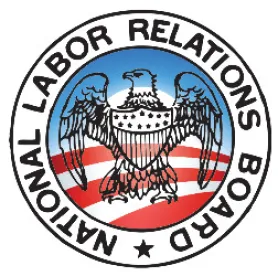In another long-anticipated decision, on July 21, 2020, in General Motors LLC, 369 NLRB No. 127 (2020), the Board replaced three context-specific rules for determining whether certain abusive conduct committed by employees is protected under Section 7 of the National Labor Relations Act (the “Act”) with the Wright Line standard that is traditionally used to assess whether an employer’s conduct is discriminatory under the Act.
Applying the Wright Line standard, which evaluates whether an employee’s conduct would have been punished absent his/her Section 7 activity, to the facts of the case, the Board held that the employer did not violate the Act when it suspended an employee who engaged in “profane or racially offensive conduct towards management.”
According to the Board, the Wright Line standard is appropriate here because it “promises more reliable, less arbitrary, and more equitable treatment of abusive conduct.” In practice, we expect that this standard will provide more leeway for employers to discipline problematic employees who engage in offensive behavior without fear of the remedies of back pay and/or reinstatement under the Act.
Factual Background: Employee’s Profane and Offensive (and Insubordinate and Threatening) Conduct Resulted in Three Separate Disciplinary Actions
An employee (Charging Party), a member of a union committee in a union-represented workforce, was suspended on three separate occasions for engaging in the following conduct:
-
On April 11, 2017, during the course of a conversation with his manager regarding overtime coverage, the employee yelled that he did not “give a fuck about your cross-training,” “we’re not going to do any fuckin’ cross training if you’re going to be acting that way,” and that his manager could “shove it up [his] fuckin’ ass.” The employee was suspended for three days.
-
On April 25, 2017, during a meeting with two other union committee members and a dozen managers, the employee “became very loud and pointed his finger while speaking.” One of the employee’s managers told him he was speaking too loudly, to which the employee responded by “lower[ing] his voice and mockingly act[ing] a caricature of a slave. Referring to [the manager], [the employee] said, ‘Yes, Master, Your Master Anthony,’ ‘Yes, sir, Master Anthony,’ ‘Is that what you want me to do, Master Anthony?,’ and also stated that [the manager] wanted him ‘to be a good Black man.’” The employee was then suspended for two weeks.
-
Finally, on October 6, 2017, during a manpower meeting with another union committee member and four managers, the employee “kept repeating the same questions. When [one of the managers] said they were going to move on, [the employee] said he would ‘mess [the manager] up.’ [The manager] asked if that was a threat, and [the employee] replied [the manager] could take it how he wanted. Later in the meeting, [the employee] began playing loud music from his phone that contained profane, racially charged, and sexually offensive lyrics. The music went on for 10 to 30 minutes. When [the manager] left the room once or twice, [the employee] turned off the music, only to turn it back on when [the manager] returned.” The employee was suspended for 30 days.
Previous Standard: Context-Specific Approach to Abusive Conduct by Employees
Prior to this decision, the Board has held that “an employer violates the Act by disciplining an employee based on abusive conduct ‘that is part of the res gestae’ of Section 7 activity, unless evidence shows that the abusive conduct was severe enough to lose the employee the Act’s protection.”
The Board determined whether abusive conduct was severe enough to lose the protection of the Act by applying one of the following tests, depending upon the context of the activity at issue:
-
The Atlantic Steel test, which is used when abusive conduct occurs in the course of otherwise-protected workplace conversations with management. The ALJ applied this test to the conduct here, which considers: (1) the place of the discussion; (2) the subject matter of the discussion; (3) the nature of the employee’s outburst; and (4) whether the outburst was, in any way, provoked by an employer’s unfair labor practice.
-
The totality of the circumstances test, which is used when abusive conduct takes place on social media or in workplace discussions among coworkers.
-
The Clear Pine Moldings test, which is used when the abusive conduct takes place on the picket line. Under this test, an employee loses the Act’s protection where “the misconduct is such that, under the circumstances existing, it may reasonably tend to coerce or intimidate employees in the exercises of rights protected under the Act.”
The Board Ditches Context-Specific Tests In Favor of the Wright Line Standard in All Circumstances
In deciding to apply the Wright Line standard, the Board identified the following shortcomings with each of the three context-specific tests, while also noting as a general matter that setting context-specific standards is “in tension with anti-discrimination laws”:
-
The Atlantic Steel test is results-oriented and has produced “inconsistent outcomes” due to the fact that “[t]he Board has not assigned specific weight to any of the factors generally, and it has chosen in specific cases to give certain factors more or less weight without adequately explaining why.”
-
The totality of the circumstances test “is unmoored from any specific factors” and, as such, creates “the same, if not more, inconsistency and unpredictability as has been found in the cases applying Atlantic Steel.”
-
Under the Clear Pine Moldings standard, picket-line misconduct loses the protection of the Act “only where it involves an overt or implied threat or where there is a reasonable likelihood of an imminent physical confrontation.” This has led to the Board finding “appallingly abusive picket-line misconduct to retain protection, including racially and sexually offensive language.”
The Wright Line standard is a burden-shifting framework, whereby first, the NLRB General Counsel must show by a preponderance of the evidence that the employee’s protected activity was a motivating factor in the employee’s decision to take the challenged action; if not, then the employer wins. If so, then the employer must show by a preponderance of the evidence that it would have taken the same adverse action regardless of the employee’s protected conduct. Such burden often can be met if the employer can show, for example, that it consistently disciplines employees for similar behavior.
The Board made clear in this decision that “[a]busive speech and conduct (e.g., profane ad hominem attack or racial slur) is not protected by the Act and is differentiable from speech or conduct that is protected by Section 7 (e.g., articulating a concerted grievance or patrolling a picket line).”
As is typical in precedent-shifting decisions, the Board further held that application of Wright Line will retroactively apply to “all pending cases in which the Board would have determined, under one of its setting-specific standards, whether abusive conduct in connection with Section 7 activity had lost an employee or employees the Act’s protection.”
Takeaways
Atlantic Steel created an exemption for outbursts that otherwise would have been unacceptable just because they were bound up in protected activity. As we have noted here, the application of the Atlantic Steel test has resulted in some strange results. Application of the Wright Line standard, rather than the context-specific analyses reasonably should make it easier for employers to understand the risk of disciplining employees for offensive and profane conduct in the workplace when such conduct is intertwined with protected activity. Wright Line is very similar if not identical to the same standard used to evaluate discrimination claims under Title VII. At the very least, it should provide more predictability for employers to potential liability under the Act, without undue weight placed on the context of the circumstances and what NLRA “test” must apply. Indeed, as the Board noted, the decision seeks to harmonize employers’ obligations under anti-discrimination laws and under the Act.





 />i
/>i

